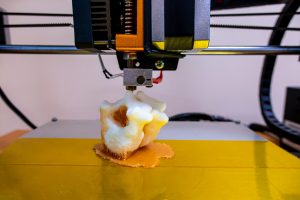The field of regenerative medicine has witnessed remarkable progress with the advent of 3D bioprinting, a technology that fabricates biological structures by precisely depositing bio-inks composed of living cells and biomaterials. This innovative approach could revolutionize organ transplantation and medical research by addressing the critical shortage of donor organs and providing more accurate models for drug testing.
Recent developments in bioprinting have focused on creating functional tissues and organs with intricate architectures. Researchers have successfully bioprinted tissues such as the liver, heart, and blood vessels, achieving significant milestones in replicating the structural and functional complexity of native organs. Advancements in bioprinting techniques have enabled the fabrication of multicellular organoids, closely mimicking the cellular diversity and organization of human organs. The convergence of bioprinting with microfluidics, nanotechnology, and artificial intelligence has enhanced the precision and functionality of bioprinted tissues, facilitating the development of more physiologically relevant models.
The global scarcity of donor organs has been a persistent challenge in transplantation medicine. Bioprinting offers a viable solution by enabling the fabrication of patient-specific organs, potentially reducing dependence on donor organs and mitigating transplant waiting times. By providing an alternative to traditional organ transplantation, bioprinting could diminish the demand for illicit organ trade, addressing ethical concerns associated with organ trafficking.
Bioprinting has significant implications for medical research, as bioprinted tissues serve as more accurate models for preclinical drug testing, potentially reducing the cost and time associated with drug development. Researchers can utilize bioprinted tissues to study disease progression and treatment response in a controlled environment, leading to better understanding and novel therapeutic strategies.
Despite the promising advancements, several challenges remain. Ensuring adequate blood supply in bioprinted organs is crucial for their survival and function post-transplantation. Ongoing research addresses this by developing synthetic vasculature capable of sustaining organ-scale tissues. Translating bioprinted organs from laboratory to clinical settings necessitates robust regulatory frameworks to ensure safety and efficacy. Ethical considerations regarding the use of bioprinted tissues must also be addressed.
Advancements in 3D bioprinting are transforming the landscape of regenerative medicine by enabling the creation of complex tissues and organs. While challenges persist, continued research and technological integration promise to alleviate organ shortages and enhance medical research, ultimately improving patient outcomes.



